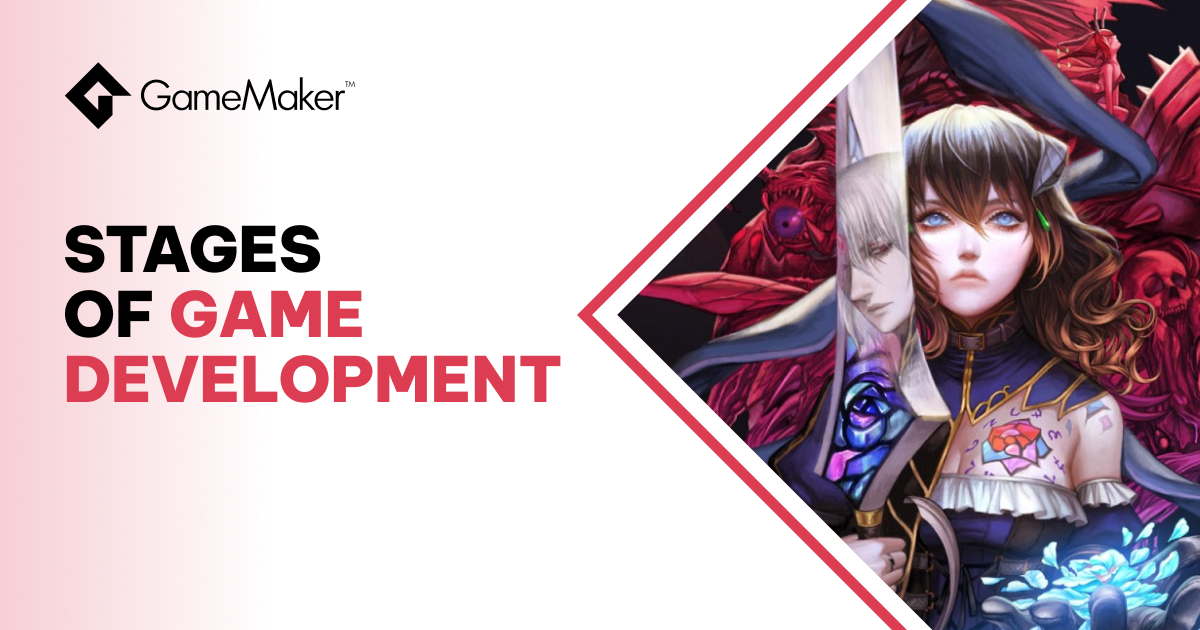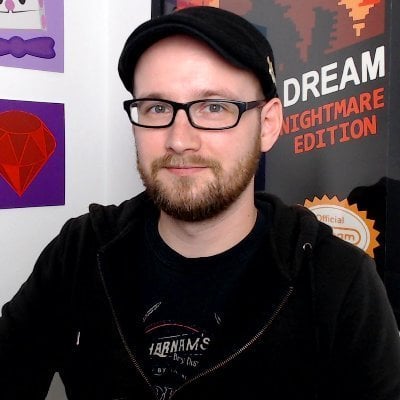What would you say Pac-Man and Bloodborne have in common? Not much, admittedly, unless Inky and Blinky secretly subscribe to some ancient Lovecraftian cult.
Even games as polar-opposite as these two are bound by a common thread: they both went through the same seven stages of game development.
No two development cycles will ever be exactly the same, but even in the sometimes chaotic, always unpredictable world of game development, this seven step structure guides developers through even the fiercest storms.
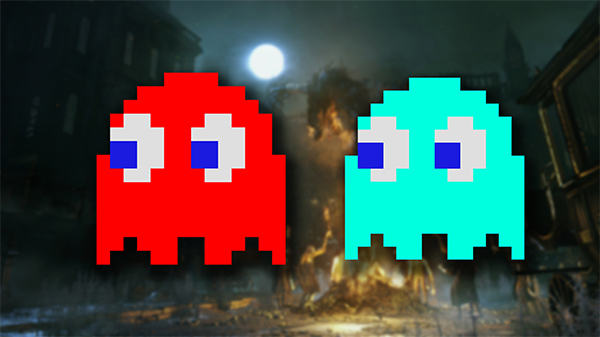
‘Fear the old ink’?
What are the stages of game development?
Some would argue that there are only three stages of game development (pre-production, production, and post-production), but that’s a bit of an oversimplification.
Could you make a wedding cake with just the instructions ‘Plan it, bake it, eat it’? You’d get the general idea, but in the words of the Great British Bake Off’s Mary Berry, you’d probably end up with a soggy bottom.

Planning
You’re out walking the dog one day, soaking in the sunshine, and suddenly, inspiration strikes: ‘What if I made a platformer about a foul-mouthed squirrel?’, you think to yourself.
Congratulations, you’ve just entered the planning stage for Conker’s Bad Fur Day.
Before you launch into developing your game, there are some fundamental questions that need answering:
- What genre will your game be?
- Will it be 2D or 3D?
- What art style will you use?
- What gameplay mechanics do you want to include?
- Who’s the hero and who’s the villain?
- Which game engine will you use?
Ideas will chop and change routinely in the planning stage, and the concept you come up with today may be unrecognisable tomorrow. Check out our guide to generating great video game concepts if you need a little inspiration.
This is one of the most important parts of the video game development process. Making changes to the fundamentals further down the line could lead to significant problems.
Let’s go back to Bad Fur Day for a minute: originally titled Conker’s Quest, the game began life as a child-friendly 3D platformer à la Super Mario 64, only for developers Rare to ditch the PG cleanliness during production in favour of a mature, satirical tone.
The change forced the game into an extra two years of development, and caused its fair share of friction amongst the team.
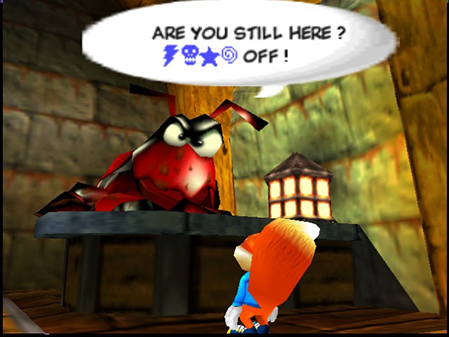
Conker’s Bad Fur Day, developed by Rare
Proof of concept
With the big questions answered, you need to create a proof of concept. This is the final part of the planning stage that determines what resources you’ll need to bring your game to life, and to try and catch a publisher’s eye.
Your proof of concept needs to answer the following questions:
- How much will it cost to make this game?
- How will you get the money you need?
- How long will this game take to make?
- Do you have all the skills you need to make the game, or will you need to hire a team?
- If you do need to hire a team, how many people do you need? How big will the team be, and what roles will you need to fill?
- How will you monetise your game?
- Which platforms will you publish it to?
If you’re an indie developer, you might need to find alternate ways of financing your game, such as crowdfunding campaigns and Early Access releases.
Storyboard trailer for Horizon Zero Dawn, developed by Guerrilla Games
Pre-production
The rubber really hits the road in the second stage of game development, known as the pre-production phase. You’ll scope out the work, create storyboards and prototypes, and decide which ideas are winners and which are destined for the cutting room floor.
You’ll need to weigh up each aspect of your game as both a standalone entity, and as a cog in a greater machine:
- Artists need to make sure the art style and colour palette match the game’s theme and genre. If your game is dark and sinister, like 2D horror platformer Tamashii, you don’t want your artists working with bright, summery colours
- Developers need to lock down the mechanics and physics of the game, and how it’ll process models and objects. Some of these decisions will need to involve artists, writers, and engineers, depending on how those decisions affect the script or gameplay
- Engineers will need to tell the team what their limitations are. The writing team might want a big cinematic finale that the game engine can’t render. Developers may want a mechanic that could cause performance issues. Now’s the time to set the boundaries
- Project leads are the piggy in the middle, balancing the demands of each team, making final decisions, removing hurdles, and keeping everyone on the same page
- Writers need to settle on the script, the characters, and the world they live in. The script will impact the art, the mechanics, and the environments that need creating
If you’re an indie developer working on a project by yourself, you’re responsible for all of these areas. It’s a lot to balance alone, but with fewer cooks in the kitchen, you’re free to make your game your way.
Your ideas start to find form and voice in pre-production, but with so many moving parts, you’ll need to be flexible. It’s rare that any game passes planning and pre-production without a few sacrifices.
Whatever problems you encounter during the other game development stages, the decisions you make in pre-production are the roots that keep your project grounded.
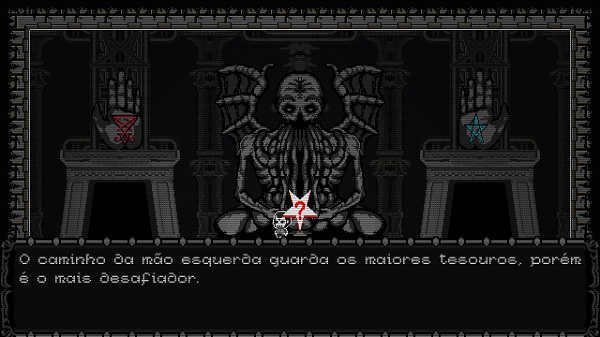
Tamashii, developed by Vikintor
Production
Production is the longest and most important stage of game development. This is where the lion’s share of your time and money will be spent, and your game truly starts to come to life.
When games are in production:
- Developers and designers create your game’s world, crafting and coding dynamic environments that complement the story, art direction, and gameplay mechanics
- Models of main characters and NPCs are designed, rendered, and animated
- Voice actors record (and quite often re-re-re-record) scripts and lines of dialogue to find the perfect tone
- Sound designers create soundtracks and in-game effects, ranging from the bleeps and bloops of menu navigation to the creaky floorboards under your characters’ feet
- Writers tidy scripts and take care of all the little copywriting tasks that crop up, like naming NPCs and writing item descriptions
Production is where the fun lies, but it's also where your ideas are put to the ultimate test, and tough decisions have to be made.
Sometimes, you’ll need to make fairly small changes. Take Spyro the Dragon as an example: you might remember that the Balloonist takes our hero from one homeworld to the next, but during production, the Balloonist was actually a Viking Boatman.
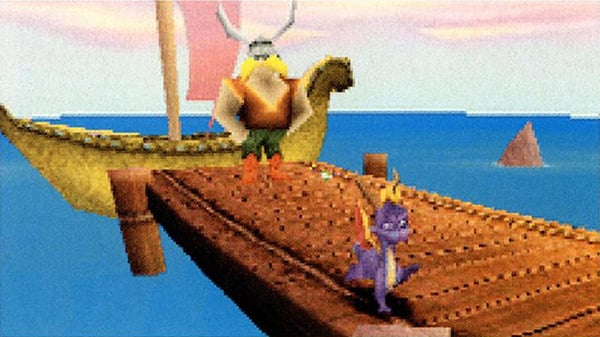
The only known picture of the Boatman from Spyro the Dragon, developed by Insomniac Games. Image from Next Generation Magazine #42
It’s never been officially revealed why the change was made, but given the Dream Weavers homeworld is a floating island in the sky, you’d have to think a boat wasn’t the most practical mode of transport.
Other times, entire segments, mechanics, or characters have to be out-right scrapped for the good of the project. During the development of cult classic Simpsons Hit & Run, for example, dozens of cars, models, house interiors, and even two whole levels were cut in order to ease the team’s workload.
Testing
The testing phase can be a lot of, but it’s a massive and exhaustive part of video game production.
At this stage, you need to test every single aspect of your game to hunt down any bugs, glitches, exploits, or softlocks that may have crept in.
Some of the problems you’ll need to test for include:
- Solid environments: Can you walk, break, or phase through parts of the environment? In Spyro: Enter the Dragonfly, for example, an unaddressed bug allows you to access the final boss whenever you like by head-bashing a specific corner of the boss gate
- Rendering and performance issues: Do all of your objects and environments appear as and when you intended them to? Do they fade in or pop in? Does the framerate drop when there’s too much on screen?
- Exploits: Can a player use a game mechanic in a way it wasn’t intended to gain unfair advantages? Mega Man’s ‘Select Trick’ is a famous exploit that allows the player to slay the Yellow Devil by firing one Thunder Beam and mashing the Select button to cause continuous damage
- Softlocks: Can a player accidentally get stuck through no fault of their own? In third generation Pokémon games, if you try to release the only Pokémon on your team that knows Surf or Dive, it immediately returns to you to so you don’t accidentally trap yourself on an island
- Difficulty: Is your game too easy or too hard in its current state? In 1986, Nintendo were determined to release Kid Icarus by its December 19th deadline, leaving creator Toru Osawa no time to balance the game’s difficulty. No surprise that it’s renowned for being controller-snappingly difficult these days, then
- Scripting and acting errors: Is everything spelt correctly, and are you using your voice actors’ best takes? The Elder Scrolls IV: Oblivion features a famous scripting flub, where the voice actor for the character Tandilwe can be heard asking for a second take during one of her dialogue options (and let’s be honest, the first take was way better)
Elder Scrolls IV: Oblivion, developed by Bethesda
What is a fun factor in games?
It’s not just stability you’re testing: you’re also testing your game’s ‘fun factor’ - the bit that makes your game fun to play.
Making sure your story is engaging, your mechanics are fun, and your puzzles are rewarding is every bit as important as the game’s technical stability. If they’re not, the game won’t sell.
Imagine Spider-Man PS4 without the web-swinging. Okami without the painting. Advanced Warfare without ‘Press F to pay respects’. Would those games still be as fun to play in their absence?
Pre-launch
The pre-launch is where your marketing kicks into gear. By now, you should have a stable beta build of your game that’s ready to present to the public.
You may decide to make trailers, demos, or release your game in Early Access. Some studios prefer to tie the big reveal into upcoming events like E3 and PAX, or presentations like Nintendo Directs or Sony’s State Of Play.
This is one of the most exciting and nerve-wracking stages of the game development process - you’re finally ready to show off all your hard work, but you’ve no way of knowing what kind of reception it’ll get.
If you run into any negative feedback, follow the example set by Bloodstained: Ritual Of The Night, which faced heavy criticism over the game’s lackluster visuals. The next trailer began with a collage of negative feedback, before cutting to producer Koji Igarashi, who tossed his wine glass to the floor and declared: “I will prove them wrong.”
The visuals were completely overhauled, and fans rewarded the team’s willingness to implement consumer feedback with an avalanche of positive reviews.
Bloodstained: Ritual Of The Night trailer, developed by ArtPlay
Launch
It’s time. Your game’s release day is just around the corner. Now’s the time to give your game its final coat of polish.
The launch stage is your opportunity to:
- Squash any remaining bugs. Studios usually list all known bugs in priority order, starting with the game-breakers that affect stability and performance, down to the minor, cosmetic issues
- Implement simple quality of life improvements
- Add the final artistic touches to models and environments
Sonic the Hedgehog programmer Yuji Naka revealed that one of the franchise’s core mechanics - the health system that allows Sonic to survive any hit so long as he has at least one Ring - was only added two weeks before the game launched in 1991.
Stories like these should give you the confidence to make minor changes if you feel they’re necessary, but always approach with caution. The last thing you need is for something to go wrong at the midnight hour.
Post-launch
Congratulations - you’ve completed the game development process and made your own game! Soaring sales figures and swathes of positive reviews are sure to follow.
There’s still a little bit of work to be done in the post-launch phase, though:
- Bug fixes. If you didn’t get the time to kill every minor bug before launch, or your players have discovered a few new ones, patch them out and tidy up the loose ends
- Downloadable content (DLC). Looking to revive some of that content you had to cut to meet your deadlines? DLC not only gives you that opportunity, but also helps you keep your game relevant with an injection of new content
- Free content updates. The one thing players like more than paid DLC is free DLC
- Game-balancing patches. Remember that winter we all spent getting decimated by Model 1887 akimbo shotguns in Modern Warfare 2? Remember the merry street parties we threw when Infinity Ward nerfed them in a post-launch patch?
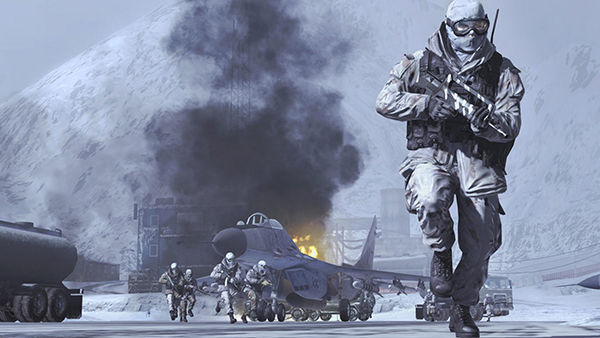
Call of Duty: Modern Warfare 2, developed by Infinity Ward
And that, children, is where video games come from.
Whether you’re making your first video game or your hundredth, the game development process is an exhilarating, tiring, predictable, chaotic experience.
Your game will face its own unique hurdles, deadlines will be missed, and some ideas will have to be sacrificed. But with the seven stages of game development in your back pocket, you’ll find the process easier to manage than those developing games by the seat of their pants.
Make it with GameMaker
If you’re feeling inspired after all this game dev talk, why not make your next game with GameMaker?
Designed for beginners and professionals alike, GameMaker has been used to create some of the world’s greatest 2D indie games, including Undertale, Hyper Light Drifter, and BAFTA award-winning Chicory: A Colorful Tale.
The software is completely free to download and keep forever. You’ll also have access to hundreds of GameMaker guides and resources, including Hero’s Trail - the simple action game you can make in just 30 minutes, even if you’ve never coded a game before.
Happy GameMaking!

